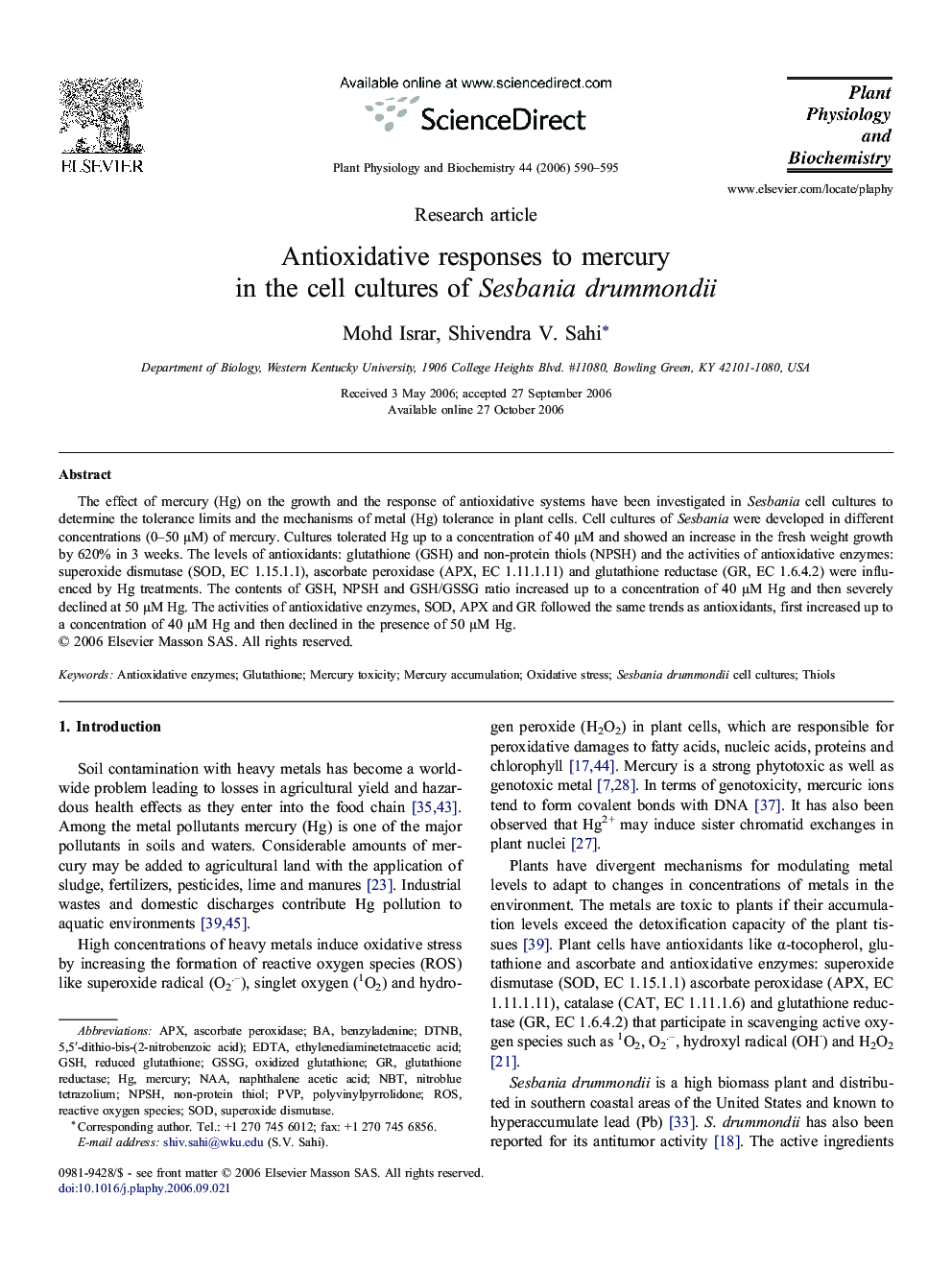| Article ID | Journal | Published Year | Pages | File Type |
|---|---|---|---|---|
| 2016727 | Plant Physiology and Biochemistry | 2006 | 6 Pages |
The effect of mercury (Hg) on the growth and the response of antioxidative systems have been investigated in Sesbania cell cultures to determine the tolerance limits and the mechanisms of metal (Hg) tolerance in plant cells. Cell cultures of Sesbania were developed in different concentrations (0–50 μM) of mercury. Cultures tolerated Hg up to a concentration of 40 μM and showed an increase in the fresh weight growth by 620% in 3 weeks. The levels of antioxidants: glutathione (GSH) and non-protein thiols (NPSH) and the activities of antioxidative enzymes: superoxide dismutase (SOD, EC 1.15.1.1), ascorbate peroxidase (APX, EC 1.11.1.11) and glutathione reductase (GR, EC 1.6.4.2) were influenced by Hg treatments. The contents of GSH, NPSH and GSH/GSSG ratio increased up to a concentration of 40 μM Hg and then severely declined at 50 μM Hg. The activities of antioxidative enzymes, SOD, APX and GR followed the same trends as antioxidants, first increased up to a concentration of 40 μM Hg and then declined in the presence of 50 μM Hg.
